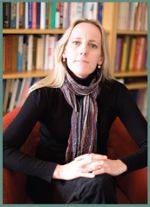Editor’s Note
 “OFTEN AMERICA is celebrated as a place that forgets,” writes Lonnie G. Bunch, director of the National Museum of African American History and Culture (NMAAHC). “This museum seeks to help all Americans remember… This is not a museum that celebrates black history solely for black Americans. Rather we see this history as America’s history.”
“OFTEN AMERICA is celebrated as a place that forgets,” writes Lonnie G. Bunch, director of the National Museum of African American History and Culture (NMAAHC). “This museum seeks to help all Americans remember… This is not a museum that celebrates black history solely for black Americans. Rather we see this history as America’s history.”
The history of the NMAAHC itself is worth mentioning, given that it took Rep. John Lewis (D-GA) fifteen years to get congressional authorization for its creation as the latest of nineteen Smithsonian institutions located in Washington, DC, and elsewhere around the United States.
Back in 1929, Calvin Coolidge authorized construction of a memorial building to serve as a national museum and tribute to the contributions of black Americans, however plans were halted by the Great Depression. The timeline of the African-American history museum then jumps forward to the 1980s, when Lewis began introducing legislation each year without success. What happened in the fifty years between? Well, a lot happened, of course. The Civil Rights movement was successful—albeit with tragic casualties—but resistance to equality never disappeared. And in terms of the museum, it seems one legislator, Jessie Helms (nickname: “Senator No”), was at times the only one standing in its way. (Helms was, after all, the Republican Senator from North Carolina who filibustered for sixteen days in an attempt to stop the Senate from approving the Martin Luther King Jr. federal holiday.)
Flash forward to February 2012, and ground is finally being broken on the National Mall site where the National Museum of African American History and Culture will reside. It currently occupies a gallery of the National Museum of American History, where it’s hosting a forceful new exhibit called “Slavery at Jefferson’s Monticello: Paradox of Liberty.”
Visitors entering the exhibit encounter a juxtaposition that sets the tone: On one side is a picture of Jefferson alongside the Declaration of Independence, drafted by his hand; on the other, a page reproduced from his farm book where the names of slaves are neatly recorded. The exhibit is very much about the lives of the individual slaves who lived at Monticello—their tools and personal belongings are on display and their efforts to pursue literacy and freedom are detailed. But the exhibit also asks us to consider what kind of man Jefferson was, which is precisely what Cleo Fellers Kocol tackles in her article, “Jefferson’s Women: Sexual Enlightenment and Racism in the Life of a Secular Hero.” Together with Peter Carlson’s examination of Jefferson’s Bible, the challenge offered herein is to grapple with the complexities and contradictions of a national icon and to look for the same within ourselves.
Humanists of all stripes and colors will be encouraged to learn about today’s growing number of African-American and Hispanic nonbelievers and their organizations, detailed in the article by former Humanist editor, Fred Edwords. And, again, readers will be challenged by him and by author Sikivu Hutchinson to consider how different the contemporary minority experience is generally, and how differently black and Hispanic humanists experience nonbelief.
Jefferson said in first inaugural address in 1801: “[T]hough the will of the majority is in all cases to prevail, that will to be rightful must be reasonable; that the minority possess their equal rights, which equal law must protect, and to violate would be oppression.”
Let’s be reasonable. Let’s be right.
Jennifer Bardi is the editor of the Humanist.
